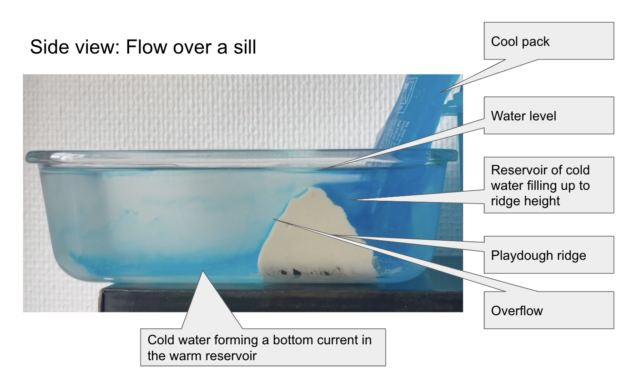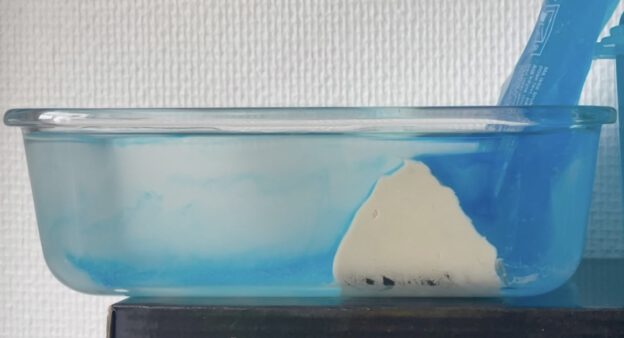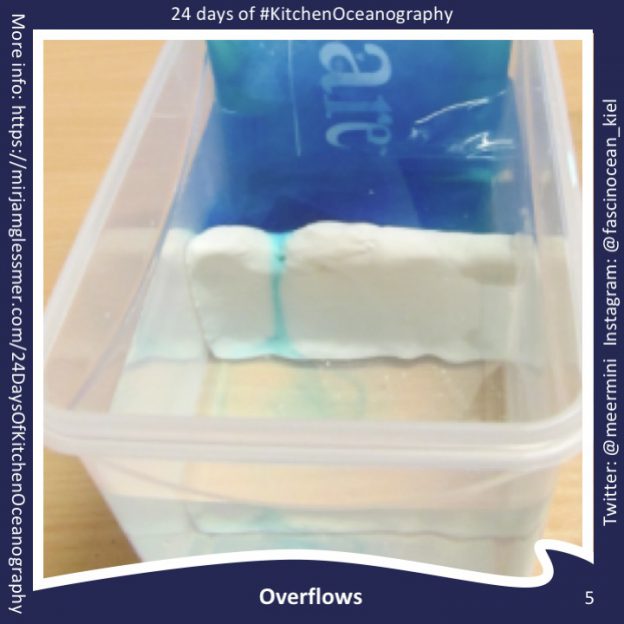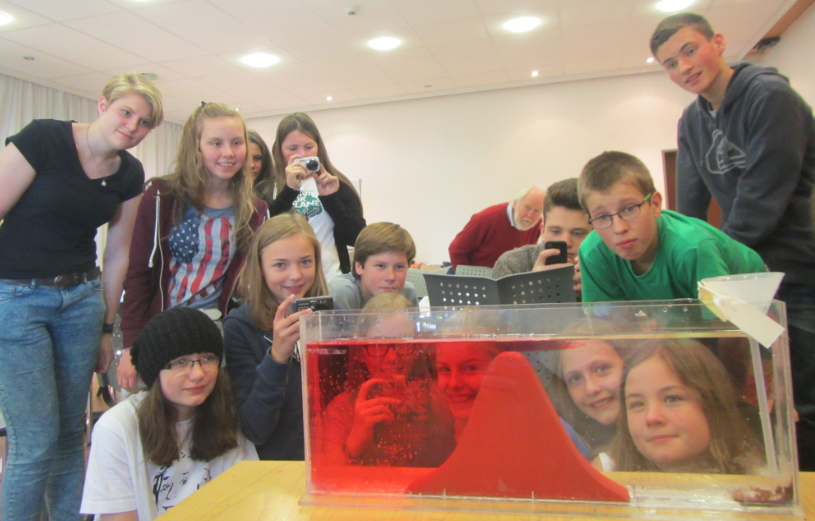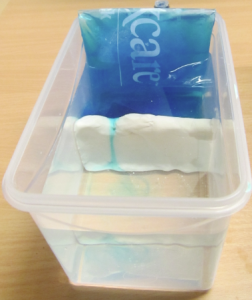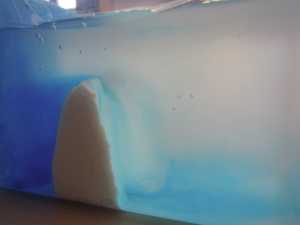Because sometimes one overflow simply isn’t enough.
Finn’s group came up with – and ran – an overflow experiment with many different densities and even more colors. While the movie didn’t turn out too well, the idea was pretty awesome.

Rolf went ahead and modeled the experiment right away. And because the plume didn’t go across the second ridge in a dramatic enough fashion, he did the same experiment again, this time with a higher density contrast.

Salinity – the higher, the redder, the lower, the bluer. Density higher than in the figure above. Figure courtesy of Rolf Käse
If you compare those two figures, you notice that the second one is a lot more diffusive than the first one. To test whether the model was doing well, we obviously had to run both experiments in the tank, too. Watch the movie below to see how they turned out:
Turns out that also for us, the run with the higher density contrast is a lot more diffusive. Kelvin-Helmholtz-instabilities develop on the first down slope of the first ridge, and generally a lot more mixing is going on. To get an impression of the regions of high mixing and recirculation, rather than guessing from the diffusing salinities, Rolf displayed the horizontal velocity:

Along-tank velocity. Blue to the left, red to the right. Figure courtesy of Rolf Käse.
Notice the high mixing whenever the plume is running down a slope, and then the recirculations in the valleys. Pretty awesome, huh?
